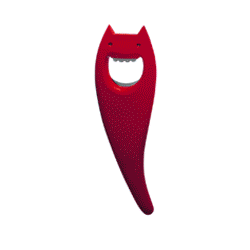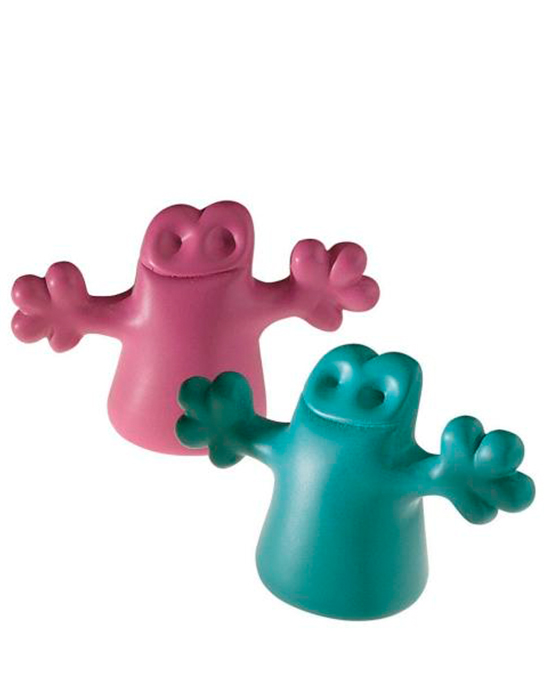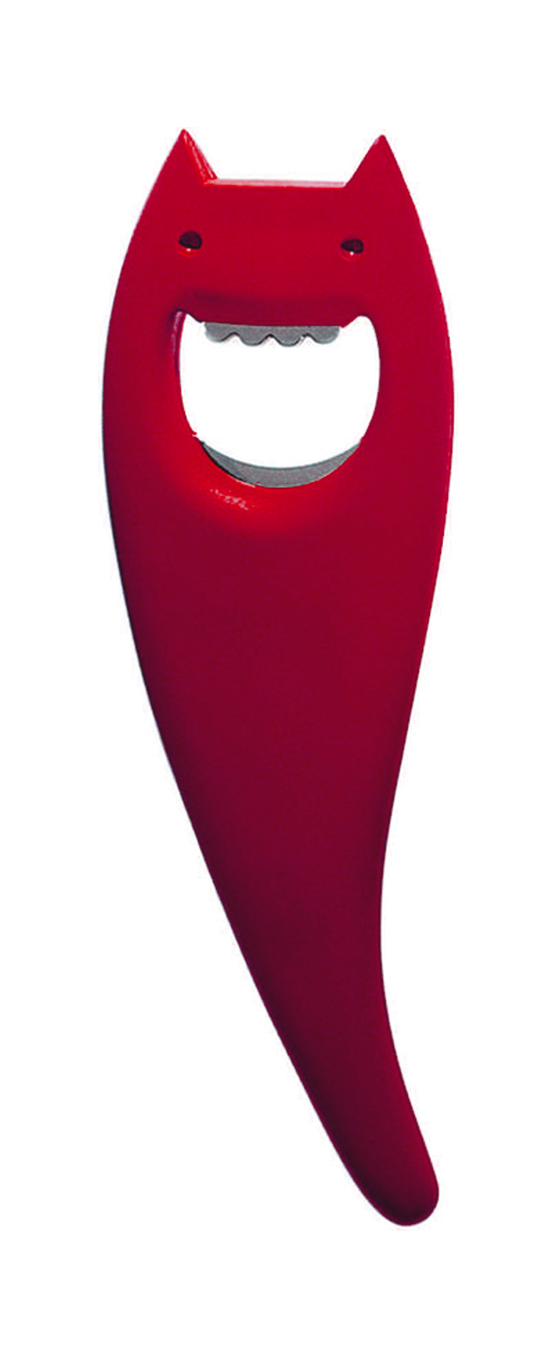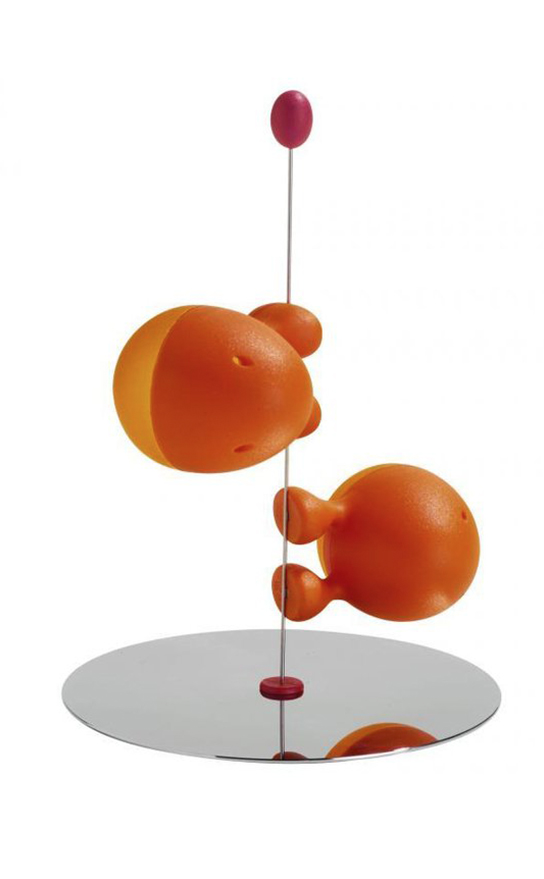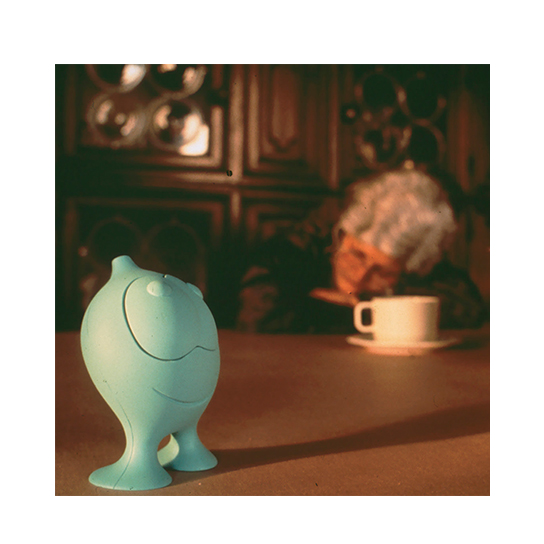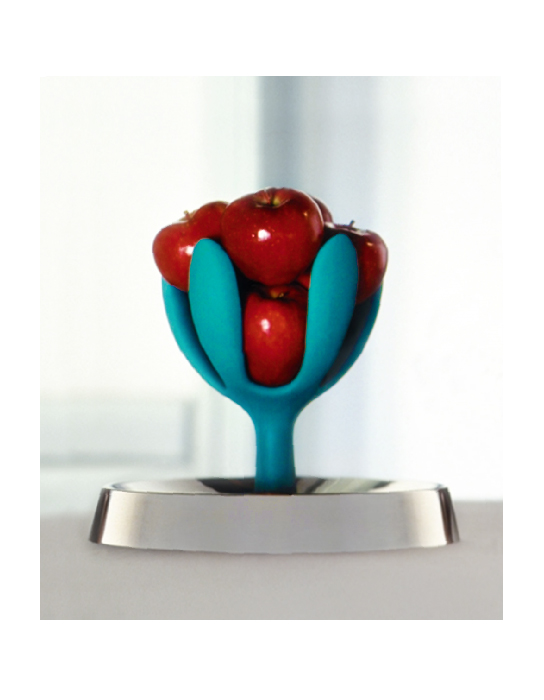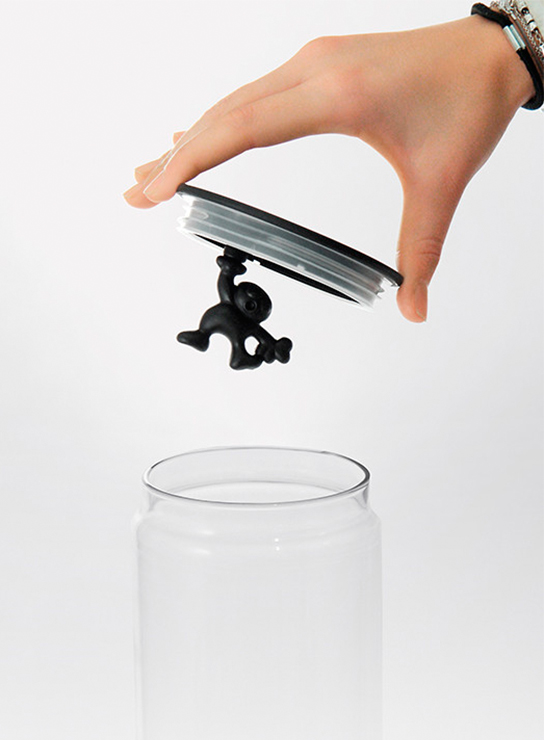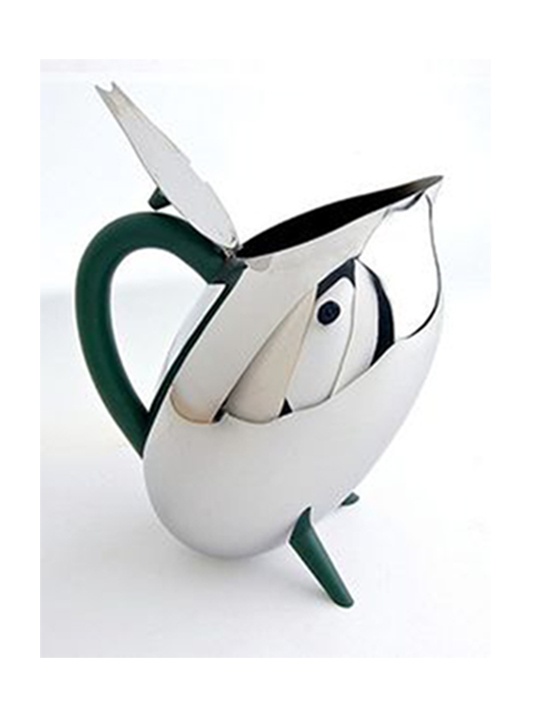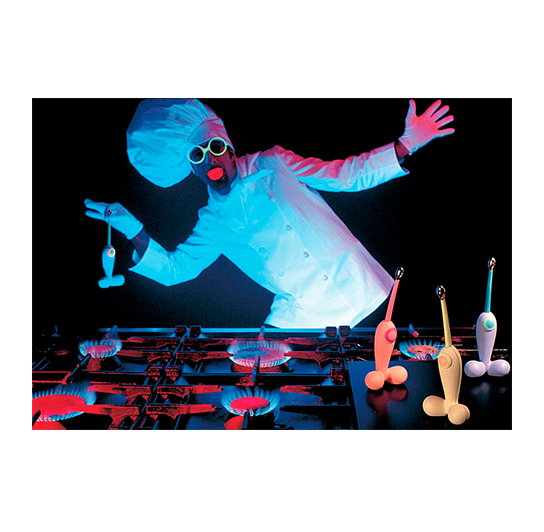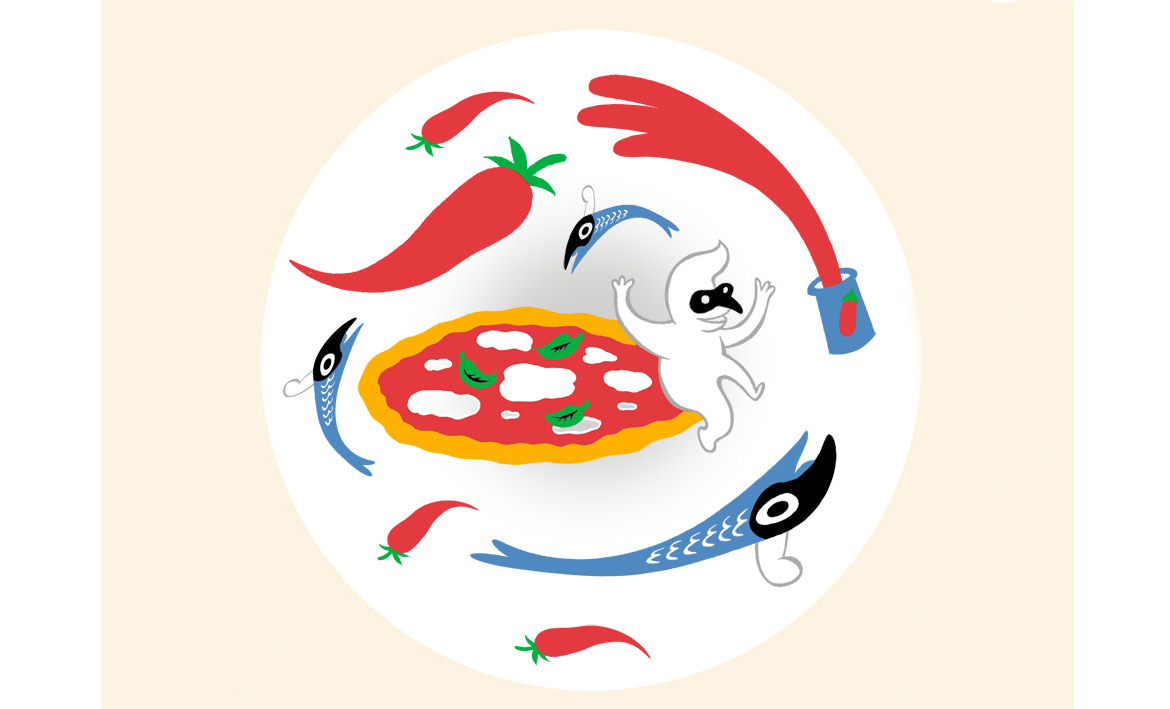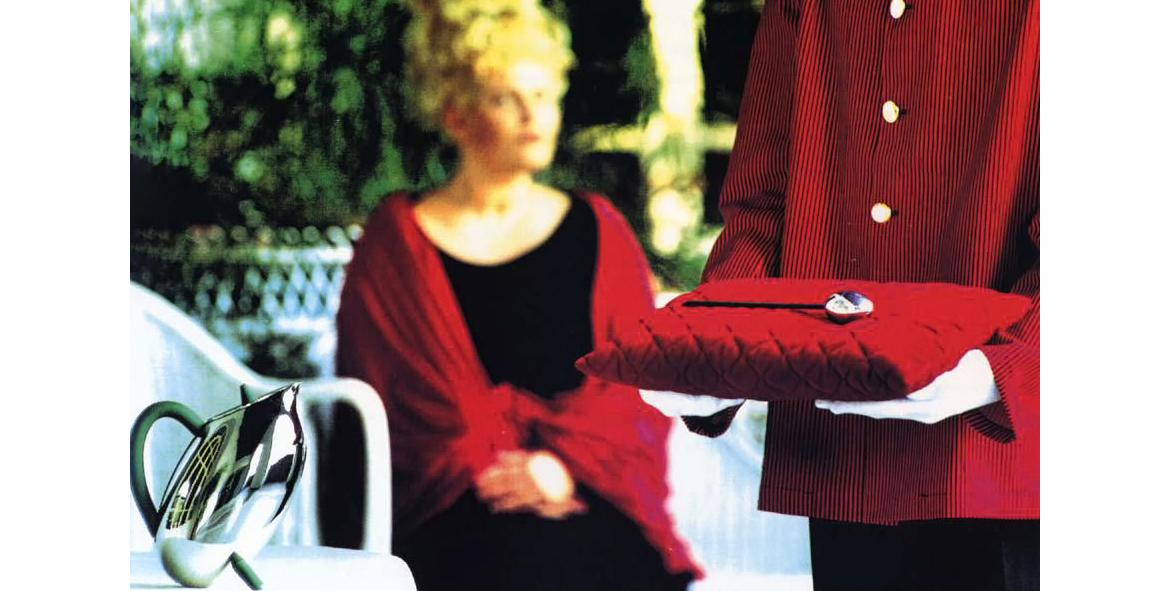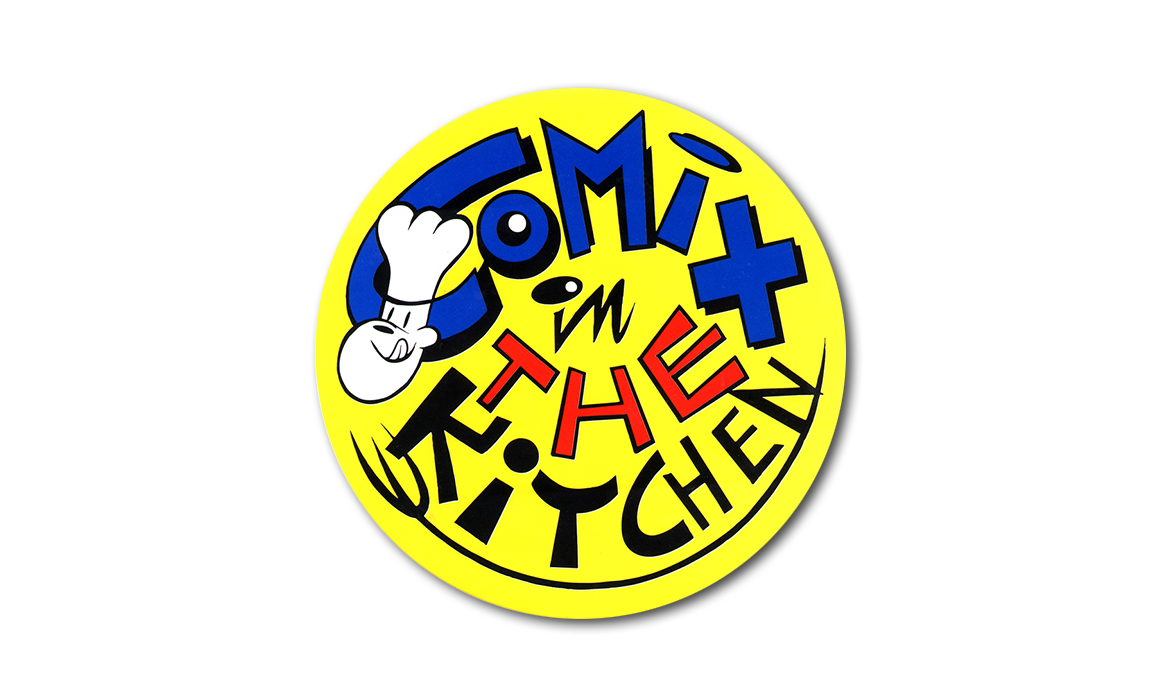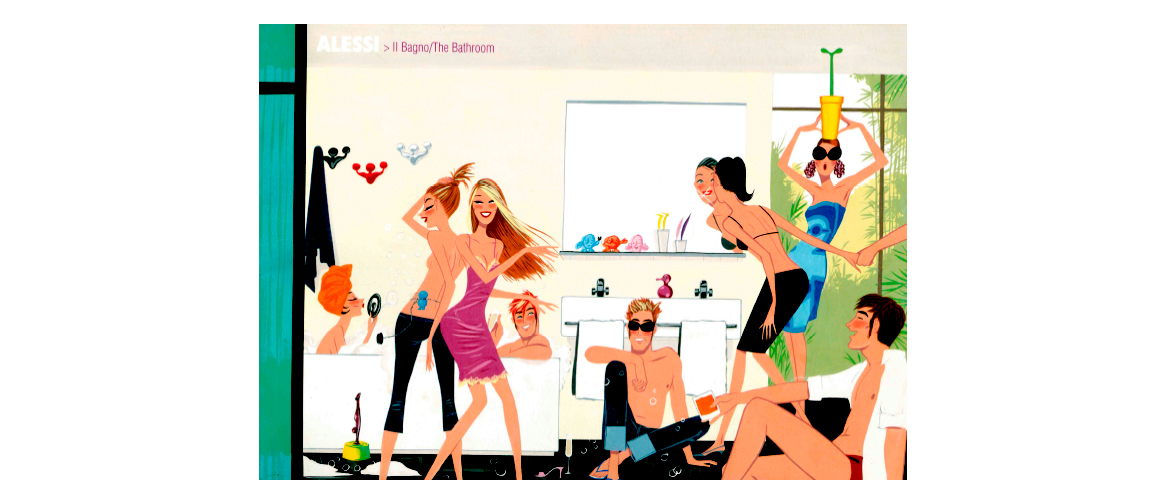Collections
F.F.F. (Family Follows Fiction)1993
"Family Follows Fiction wanted to create objects that were like characters, actors in a 'fiction', storytellers of relation"
“Play is a serious matter.” In February 1991 I began an intense exchange of thoughts and reflections with Alberto Alessi, Franco La Cecla, Marco Migliari and Luca Vercelloni. Gradually a new scenario to be explored took shape, “the object-toy”. Play is the first good practice in understanding the world around us. Children use it to experiment, learn, get in touch, meet deep needs, emotional, intimate, sensorial. In our reflection, Franco Fornari’s theory of affective codes as well as the writings of Donald W. Winnicott on transitional objects and paradoxical thinking, offered ulterior tools to our investigation.
In a room full of objects, a child will choose one to escape boredom and loneliness, but why that one? The challenge was to reproduce in the project the animistic process common to children’s and primitive cultures’ representation of the world. A process that occurs spontaneously, caused by the emotional needs of individuals: to give a soul to inorganic and inanimate objects. Recognizing that they are capable of acting allows us to interpret an otherwise dark and threatening world.
In April, we were ready. Pierangelo Caramia, Stefano Giovannoni, Massimo Morozzi, Giovanni Lauda, Alejandro Ruiz, Denis Santachiara and Guido Venturini, these were the designers involved in this new meta-project, chosen because we felt that they would be able to interpret the communicative dimension of the objects that we wanted to explore. Between subject and object, in addition to the instrumental relationship, there is also the “communicative” one. That relationship is the object to “communicate”, to have an effect on the subject. We wanted to highlight the affective valence of objects when they “act” on people not just mere tools but as entities with emotional qualities through which they become desirable, tender, inseparable. The consumer object is elevated to a poetic and imaginative structure, capable of touching individuals’ emotional chords.
“F.F.F.” the title of the workshop, paraphrased “Form Follows Function”, the famous axiom of Louis Sullivan. With our research we entered into a new dimension of design: “Family Follows Fiction”. It wanted to create objects that were like characters, actors in a “fiction”, storytellers of relational stories. The objects on the table thereby became a family of little creatures, animate beings capable of creating relationships in the domestic world.
This research was accompanied by the exploration of possible new materials with which to produce objects. Until then Alessi had only worked with metals, mainly steel, but other materials — such as plastic — seemed better suited to explore the world of color and the scope of an object’s sensorial pleasures, more akin to the emotional and relational dimensions we wanted to investigate
It was a pleasurable project. We can say that we enjoyed it. The result was a new chapter in the world of Alessi: objects that were maybe more autonomous, able to have an independent relationship with the world, alluding to unknown imagery or, in other cases, to fantastic worlds… some creatures were born.
In 1993, the objects created by the workshop were presented with a big event organized in Milan, a celebration that was a project within the project. In a striking industrial building no longer in use we realized a scene composed of lights and graffiti. We involved a demented rock band that played throughout the evening. Objects, reproduced in the form of large paper mache hats, marched into that space worn by models. All around, there was an evocative set design created by a sequence of works by Mattia Di Rosa: panels painted in tempera, each with a small shelf that displayed the actual products.
“Il gioco è una cosa seria”. Nel febbraio del 1991 iniziai un fitto scambio di pensieri e riflessioni con Alberto Alessi, Franco La Cecla, Marco Migliari e Luca Vercelloni: progressivamente si delineò un nuovo scenario da esplorare, “l’oggetto-giocattolo”. Il gioco è la prima buona pratica per comprendere il mondo, il bambino lo usa per sperimentare, conoscere, entrare in relazione, soddisfare bisogni profondi, affettivi, intimi, sensoriali. Nella nostra riflessione, la teoria dei codici affettivi di Franco Fornari e i testi di Donald W. Winnicott sull’oggetto transizionale e sul pensiero paradossale, ci offrirono ulteriori strumenti per la nostra indagine.
In una stanza piena di oggetti un bambino ne sceglie uno per uscire dalla noia e dalla solitudine: perché proprio quello? La sfida era di riprodurre nel progetto il processo animistico comune alla rappresentazione del mondo propria dei bambini e delle culture primitive. Processo che avviene spontaneamente, provocato dalle esigenze emotive degli individui: attribuire un’anima anche agli oggetti inorganici e inanimati, riconoscendoli così capaci di agire, permette di interpretare un mondo altrimenti oscuro e minaccioso.
In aprile eravamo pronti. Pierangelo Caramia, Stefano Giovannoni, Massimo Morozzi, Giovanni Lauda, Alejandro Ruiz, Denis Santachiara e Guido Venturini, questi i designer coinvolti in quel nuovo metaprogetto, scelti perché sentivamo che sarebbero stati in grado di interpretare quella dimensione comunicativa degli oggetti che desideravamo esplorare. Tra soggetto e oggetto, oltre alla relazione strumentale, esiste quella “comunicativa”. In tale relazione è l’oggetto a “comunicare”, ad avere effetto sul soggetto. Desideravamo evidenziare la valenza affettiva degli oggetti, quando “agiscono” sulle persone, non più soltanto meri strumenti ma entità dotate di qualità emozionali attraverso le quali diventano desiderabili, teneri, inseparabili. L’oggetto di consumo si elevava a struttura poetica e immaginifica, in grado di andare a toccare le corde emotive degli individui.
“F.F.F.”, il titolo del workshop, parafrasava “Form Follows Function”, il famoso assioma di Louis Sullivan. Con la nostra ricerca entrammo in una nuova dimensione del progetto: “Family Follows Fiction”. Si desiderava creare oggetti che fossero come personaggi, attori di una “fiction”, narratori di storie relazionali. Gli oggetti sulla tavola divenivano così una famiglia di piccole creature, esseri animati capaci di tessere relazioni nel mondo domestico.
Questa ricerca si accompagnò all’esplorazione di nuovi possibili materiali con i quali produrre gli oggetti. Fino ad allora Alessi aveva lavorato solo con i metalli, principalmente l’acciaio, ma altri materiali – per esempio la plastica – apparivano strumenti migliori per esplorare il mondo del colore e l’ambito del piacere sensoriale dell’oggetto, più affine alle dimensioni affettive e relazionali che volevamo indagare.
È stato un progetto felice, possiamo dire che ci siamo divertiti. Il risultato è stato un nuovo capitolo del mondo Alessi: oggetti forse più autonomi, in grado di avere con il mondo una relazione indipendente, allusiva a immaginari conosciuti o, in altri casi, a mondi fantastici… sono nate delle creature.
Metaproject stories
Object
